Ok, so here’s the thing about Canadian whisky. Laws about what constitutes “Canadian Whisky” are somewhat less strict than those for, say, bourbon or scotch. The law allows “blended Canadian Whisky” to contain either column-still or pot-still whisky distilled from a mash of grains including corn, rye, barley, and wheat. It must be distilled and aged in Canada. It may contain spirit caramel for coloring, and it may contain flavoring ingredients. It must be aged for at least three years in oak barrels, which can be new or refill. Canadian whisky can contain high-proof neutral grain spirits in amounts as high as 90% of volume, unless they are sold in the United States, where at least 20% by volume must be “straight whiskey”.
The concern for whisky lovers is that “flavoring ingredients” line, which basically allows Canadian whisky producers to sweeten their products using caramel, sugar, or other ingredients without disclosing them on the label. This is not to say that all producers do this, in fact it’s likely that Crown Royal does not, but owner Diageo is not very specific about its operations. For example, while the website claims that Crown Royal is a “blend of 50 distinct Canadian whiskies”, due to corporate consolidation during the period when CR was owned by Seagram, all production of these whiskies was combined at the large Crown Royal plant at Gimli, in Manitoba. Do they produce 50 “distinct” recipes of whisky at this plant and then blend them? I doubt it.
The primary difference between a Canadian blended whisky and other blended whiskies on the market is that Canadian whisky is generally lighter in style, and usually has a higher percentage of “neutral” grain spirit in the blend. Some newer craft and small-scale producers of Canadian whisky – foremost among them Forty Creek – have been rescuing the reputation of Canadian whisky with carefully-crafted, high-quality spirits. It should be noted that a large amount of Canadian whisky (and probably the best of the stuff) is not exported outside of the country.
Crown Royal Reserve is simply a blend of Crown Royal that contains a higher percentage of longer-aged and hand-selected casks. It was first released as “Special Reserve”, but Diageo dropped the “Special” and updated the label in 2008.
Nose: Some Rye spiciness, with soft overtones of brown sugar and maple syrup. Slightly bourbon-like, although not as robust.
Palate: Thin body. Maple again. A bit watery. Slightly woody, slightly sweet.
Finish: Nutty, but with a twinge of bitterness. Aftertaste of artificial sweeteners.
With Water: Too watery. Even a little bit of water kills the nose and washes out the palate.
With Ice: An ice cube sweetens it, but dilutes the flavor. As with most iced whiskeys, do this only if you dislike the flavor of straight whiskey.
Overall: Not objectionable. The flavors are mild. It tastes a bit like an American rye, but watered down and sweetened. Possibly not worth the money unless you already love Crown Royal and want a direct upgrade. If you are looking to experiment with Canadian whiskies, I would suggest starting with Forty Creek instead.




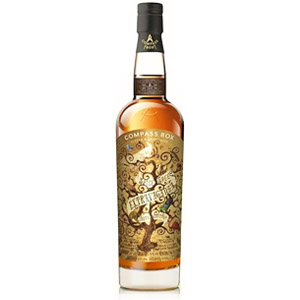
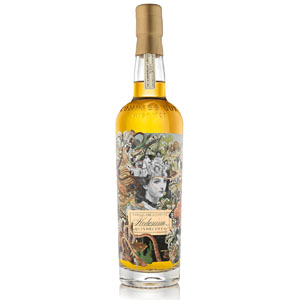
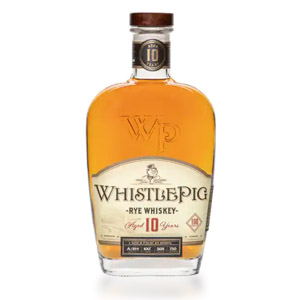
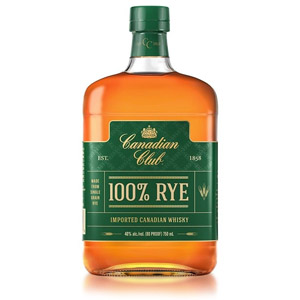
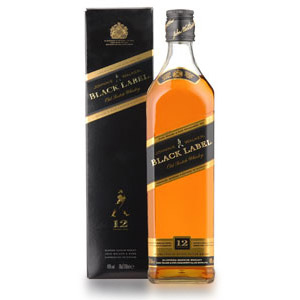
“As with most iced whiskeys, do this only if you dislike the flavor of straight whiskey.”
I generally drink my whisk(e)ys neat, but sometimes, I drink them with ice. I do not dislike the flavor of straight whiskey, and here are some of the reasons I might add ice (or something else):
1. It’s hot, and I want something cold to drink. If it’s hot outside, that means it’s hot in my 1918 Mediterranean-style house. No central AC means I am going to put a cube of ice in my damn Rittenhouse, and since it’s 100 proof, it can handle it.
2. God, in his great beneficence, saw fit to make the human mind a thing of wondrous imagination and ingenuity. Humans realized that the introduction of other flavors to their spirits (bitters, other spirits, etc) resulted in some unique, and delightful, *new* flavors. And God saw the Sazerac and said “It is good.”
Good points, Joshua. Many people (including myself) forget that scotch, for example, is generally consumed in a much colder environment (Scotland in the winter, or rain, or wind… brr) and thus has no need of ice. Whisky changes when ice is added to it, but not necessarily for the worse. I should re-word my statement to: “do this only if you like the flavor of iced whiskey.”
I agree on Forty Creek. Stay away from Crown Royal “Maple Finish.” It’s gross.
I was under the impression that there were no Grain Neutral Spirits (or whatever they are called) in Canadian whisky; while it may contain some higher-proof whisky as a base, this whisky has also been aged for a minimum of three years. Also, there is no ‘mash bill’ for Canadian whisky; the whiskies are created by blending a base whisky (usually a corn whisky) with a rye whisky, or a malt whisky, and/or sometimes a wheat whisky – rather than creating a multi-grain mash, so it is entirely possible that Diageo/Crown Royal does use up to 50 different whiskies when creating its whiskies.
Oh, so many misconceptions, myths and false assumptions. I wouldn’t know where to start correcting this. It’s the same old wikipedia-grade nonsense and barroom “knowledge” recycled. Please, you’ve got a great site. Don’t spoil it by jumping to conclusions and racing to publish the same old hogwash. Do your homework then publish well-researched information. People will thank you.
Hi Davinde, I actually checked your site looking for information about this particular whisky, and saw that you hadn’t reviewed it. It’s exceptionally difficult, as I’m sure you know, to sort fact from fiction on the Internet. This is ESPECIALLY true when a whisky producer has such paltry information about its own products available. Add to this the laughably limited number of Canadian releases (good ones) that make it into US retail, and it should be no wonder that Americans such as myself have such a restricted and biased view of Canadian whisky. I am of course happy to fix factual errors, if anyone who reads this has time to find real info on this whisky from reliable sources. I wasn’t able to find any.
Yes, the internet is a terrible source of information about whisky. That’s why I would encourage you to use other sources. My book is quite thorough and only $15.00 on Amazon. http://www.amazon.com/Canadian-Whisky-Portable-Davin-Kergommeaux/dp/0771027435/ref=sr_1_1?ie=UTF8&qid=1329186340&sr=8-1
And first of all: Thank you for taking this foray into Canadian whisky. I hope my overly-blunt comments won’t discourage you or make you defensive. On reading, my comments seem a bit abrupt.
Now a few thoughts:
Three year minimum ageing is at least as strict as two year minimum for bourbon or just minutes for other American whisky. Regulations differ from one country to the next but are not more or less restrictive, just different.
Like Canadian whisky, Bourbon can be column or pot distilled – eg Woodford Reserve is a blend of pot-distlled from one distillery and column distilled from another. Most Canadian whiskies are single distillery whiskies. Only in the U.S do they call them blends. Most Scotch (remember 90% of scotches are not single malts) are a blend of pot-distilled and column-distilled whiskies.
Flavouring ingredients are generally used for the U.S. market only as the US gives them tax breaks to do so.
Canada uses ‘grain bills’ not mash bills. In Canada they blend the grains after distillation, in the US they blend the grains before distillation.
There is NO grain neutral spirits in Canadian whisky. Ever. High abv spirits aged in wood for at least 3 years, often longer, are used and these taste like whisky because they are whisky.
Different formulas are used for the high abv spirit that is used to make base whisky as different bases give different flavours and significantly different mouth feels.
The 20% straight spirits rule applies to American blended whisky, not Canadian. As above Canadians use 100% whisky except for the US market where up to 9.09% of other things are added to accede to US government incentives. (Some of this is now starting to find it’s way into Canada as well.)
The caramel sweetness you taste comes from the wood. These are oak caramels and vanillins, not added caramel. Sweetness originates in the oak barrel.
Yes, Crown produces well over 50 different whiskies. A lot more than just the recipe affects how the whisky turns out, especially when you don’t use mash bills.
You are absolutely correct in directing people to Forty Creek. It’s a great place to start but there are many many other great ones as well. But they are not Scotch or bourbon and should not be rated as if they were.
Well said, set the record straight, a sign of intelligence here!
So how is it that my nip bottle of seegrams 7 crown states in tiny letters that it is 75% neutral spirits
Seagrams 7 Crowns is Blended American Whiskey
Crown Royal Cask 16, extra rare blue, the rest add ginger ale and away you go.
Is crown royal or any other whiskey gluten free?
Hi Dean,
All whiskies – indeed all distilled spirits that haven’t been adulterated – are inherently gluten free. Gluten is a protein, and proteins do not evaporate along with the water vapor and alcohol vapor produced during distillation. The only time you might find gluten in a bottled alcohol product is if it’s been mixed with flavoring compounds that contain gluten. This happens frequently with sugar (most liqueurs like Triple Sec for example are mostly sugar), but I don’t know of any examples that contain gluten. You’re safe with any whisky or whiskey, and also safe with rum, tequila, vodka, brandy, etc.
Thank you so much for the information. I found your site randomly searching the net and enjoyed the thorough information and conversations. Other sites I found seem to not give a clear answer. I personally enjoy Crown Royal (on the rocks & neat) but have gluten issues and did not want to give up my whiskey. Thanks again!
Wanting to get several bottles of crown royal peach
I just finished my last bottle of the CR Monarch (75th Anniversary) and enjoyed that as a relaxing, sipping drink. Any suggestions on what I might try next that’s comparable or better?
I’m not the best resource for Canadian whisky, but my two favorites are Lot 40 Rye and Crown Northern Harvest Rye. I haven’t really reviewed anything in the higher price ranges for Canadian whiskies. The closest world whisky category is probably Irish whiskey or single malt scotch (as American ryes and bourbons tend to be a lot heavier). There’s plenty of options there! 🙂